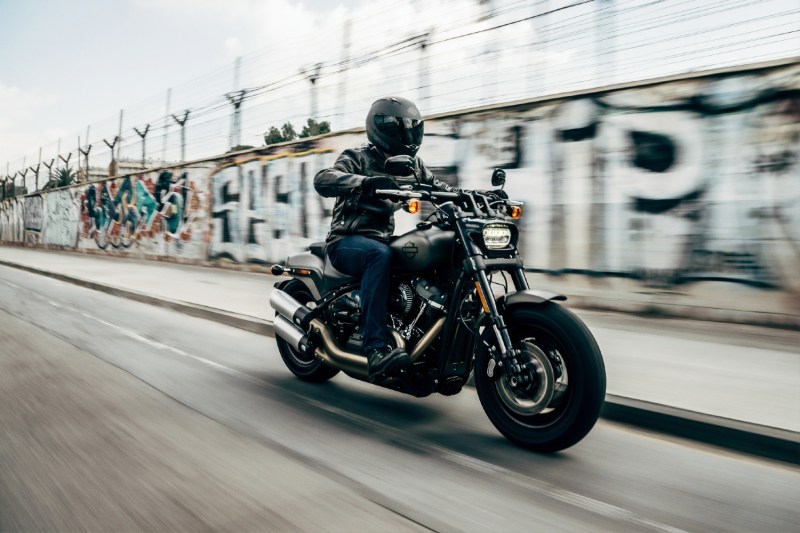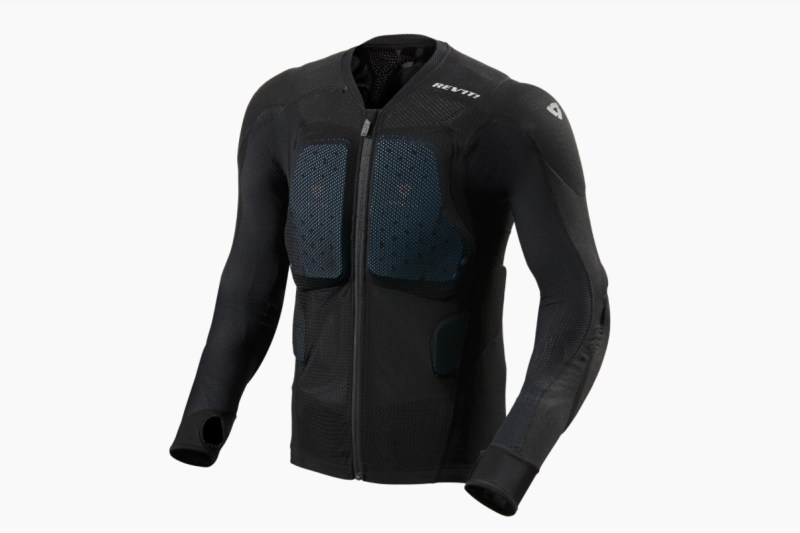
You know what’s cool? Motorcycles. And yeah, we mean all of them. That includes fire-breathing literbikes out riding in the canyons, the little 400cc supermotos that inevitably put them to shame in the twisties, and everything in between. You know what isn’t cool? Road rash, broken bones, and hospital bills. Ask us how we know… You might think this is common knowledge, but for some reason, way too many riders still choose to hit the streets in jeans, sneakers, and a hoodie every day. Call it a hunch, but we can’t help but think the “cool factor” has something to do with it. Well, good news: The best motorcycle gear keeps your skin on your body where it belongs, and it also makes you look great doing so.
You can absolutely ride safely without looking like the Goldwing dad we all know (and love) doing 55 in the fast lane wearing head-to-toe safety gear and a modular helmet. Here are the fast and easy steps to up your motorcycle protection game without looking like the poster child for precaution.
Related Guides
Step 1: Rethink Your Helmet Selection
As far as we’re concerned, there’s only one serious choice for a motorcycle helmet, and that’s a full-faced one. Open-face helmets, half-helmets, brain buckets, whatever you want to call them, they all belong in the trash. Technically the modular helmets we picked on above check the full-faced box, but most riders under 55 just can’t bring themselves to buy something so … practical. A standard full-face street helmet will always do the trick, but here’s our favorite alternative.
Helmet: Bell MX-9 Adventure MIPS Helmet

Nothing screams hooligan style like wearing goggles on a street bike. For our money we’re going with the Bell MX-9 Adventure MIPS helmet, which looks sweet, comes in a ton of colors and patterns, sports an aggressive peak, and is both DOT- and ECE-certified for crash protection. We love that the Bell MX-9 Adventure also features a wide enough viewport to accommodate goggles both with the shield up or down, which comes in handy for keeping highway noise to a minimum on longer rides.
As an added bonus, the peak of the helmet is easily removable, so you can pull it off for long stints on the slab where the wind is a factor, then throw it back on at lower speeds. And, of course, because this is a true dual-sport helmet, the Bell MX-9 Adventure is a great helmet for offroad use as well and provides abundant airflow to keep the sweat to a minimum during any serious offroad shenanigans you might get into.
Goggles: 100% Strata 2 Goggles

As far as goggles go, the MX-9’s viewport is large enough to fit most of the popular offroad options out there, but we’re fans of the 100% Strata 2 as a great all-rounder. These goggles are comfortable enough for all-day wear, work great in offroad situations from dust to gravel, and come in plenty of colors for folks that want to get all matchy-matchy with their bikes (Ducati crowd, we’re looking at you). You also can get them with a variety of different colored lenses, although we’re partial to clear or yellow lenses because they work well for riding at night.
Step 2: Take the Armor Out of Your Jacket
Yes, you read that right. If you want to ride safer, stop wearing armor in your jacket.
Don’t get us wrong, a jacket with armor in the elbows, shoulders, back, and chest is better than one without, but there’s a better way to go about it. We’re talking about armored base layers, which are a much better solution for a few reasons.
First, an armored base layer keeps you protected no matter what you wear over it. This allows you to wear any casual leather jacket (just make sure it’s full-grain leather) or abrasion-resistant synthetic jacket out on the road without any bulky protrusions that make you look like the Michelin Man. Second, armored base layers do a much better job of keeping your armor where you need it in the event of a crash. Because these layers sit next to your body rather than inside the pocket of an exterior layer like a typical motorcycle jacket, they’re less likely to squirm around at the first sign of pavement and leave your high-risk areas vulnerable. And, while we still don’t think riding with a cotton hoodie is advisable, some of you are going to do it anyway, and this will allow you to maintain a casual appearance while covering important things like, say, your spine.
Rev’It! Proteus Armored Jacket

Lightweight, highly breathable, and highly protective, the Rev’It! Proteus Armored Jacket is our favorite armored base layer currently available. For your money, you’re getting CE-level 2 protection on the elbows and shoulders, a CE-level 2 back protector, CE-level 1 armor on both sides of the chest, and additional padding along the ribcage. Comfort-wise the Rev’It! Proteus sports a highly-breathable mesh construction throughout with plenty of stretch, plus all the armor is made from SEESOFT closed-cell foam, which stays cushy and pliable until it’s subjected to an impact. We also love that the Proteus uses a full-length zipper for easy on-off, so you can open it up and let it hang under your jacket of choice when you’re off the bike.
Step 3: Don’t Skimp on the Footwear
Multiple studies on motorcycle crashes have shown that the vast majority of
TCX Street 3 WP Shoes

We see a lot of folks out riding in Van’s ever-popular Sk8-Hi sneaker, and whether they’re made from leather or canvas, they’re far from safe. Enter the TCX Street 3 shoe, which borrows from the old-school Vans style, but also packs in a commendable amount of protection for a riding shoe. While the Street 3 looks about as casual as can be from the outside (we particularly love the green suede colorway), inside TCX packed enough tech to give the Street 3 a CE safety rating across the lineup. Ankles are protected by D3O padded inserts, reinforcements are hidden in the toe and heel, and there’s even a semi-rigid shank in the footbed to protect you from crushing forces while still offering plenty of flexibility for comfortable walking.
Dainese Atipica Air Shoes

If you’re more of the modern sneakerhead type, check out the Dainese Atipica Air riding shoes. Where most
Step 4: Gloves Should Be Meant to Slide
The most important safety aspect of any motorcycle glove is its ability to protect your hands while sliding across the ground. That means abrasion resistance is key, so again you’ll want to limit your selection to either full-grain leather or comparable “super-fabrics,” but the best
Alpinestars Celer V2 Gloves

Typically, the more safety features you add to a motorcycle glove, the more it looks like something you’d see on an astronaut or maybe a Power Ranger. That’s not the case with the Alpinestars Celer V2. We love the Alpinestars Celer because it’s got all the safety features you’d want in a short-cuff glove, but sticks to a muted style, especially when optioned in all black. The price point of these gloves is also fantastic considering you’re getting full-grain goat leather construction with added palm reinforcements, padded hard-plastic impact protection at the knuckles, and Alpinestars’ patented finger-bridge technology that keeps your pinky from going its own way in the event of a crash.
Will The Best Motorcycle Gear Really Help In A Crash?
We’re gonna go with an emphatic “yes” here. We’re not particularly proud of it, but we’ve crashed wearing just about everything from shorts and Chuck Taylors to full one-piece leathers. Laying a bike down sucks, especially when it’s not your fault in the first place. It sucks a lot less though when you stand up and realize you don’t have a scratch on you, let alone a broken bone or an impressive collection of small rocks embedded in your forearm.
There’s an old adage out there that there are two types of motorcycle riders: Folks who have crashed, and folks who haven’t crashed yet. There’s an even older one that goes something like this: “There are old riders and there are bold riders, but there are no old bold riders.”
So yes, maybe there’s a reason all those old Goldwing dads are dripping head to toe in safety gear: They love to ride, and they want to keep riding. We want you to become that old man that still loves riding one day, but let’s not rush into the modular helmet just yet, eh?



